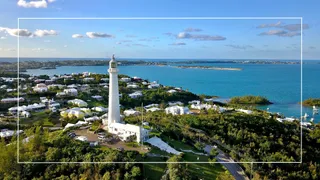
More of the same: ILS innovation lags behind the hype
Bermuda’s position at the heart of the insurance-linked securities (ILS) world makes it the natural stage for every new concept — cyber, casualty, climate-linked, parametric — to be tested. But for all the talk of innovation, the reality is far more restrained.
That is according to Morton Lane , president of Lane Financial, who, speaking exclusively to Bermuda:Re+ILS about trends in the ILS space, said: “I think we will see more of the same. I don’t think the trends we are seeing now will differ much in the near future.”
That pragmatic view cuts through much of the buzz surrounding expansion into new perils. Cyber ILS, for instance, “is the thing that everybody gets excited about,” Lane said, “but there are only a handful of deals out there.” The recent headline-grabbing cyber incident involving Jaguar Land Rover’s lack of coverage “was the perfect advertisement for cyber insurance. Let’s get it securitised.”
The same caution applies to casualty ILS, a line that has been creating some conversation stir but is seldom executed. “There’s always a lot of talk about casualty, but I still think it’ll take some time before we get there,” Lane said.
Perhaps most striking is what he sees as a missed opportunity in health-related ILS. “If you look at the issues that have been done in that area, there’s only been one issuer — Aetna,” he notes, referring to the US insurer’s Vitality deals. “It began issuance for health insurance in 2010. That was 15 years ago… that’s extraordinary! It’s been pumping those out—with its 16th issuance this year—and nobody’s copied or joined them.”
Despite the enormous scale and problems of the healthcare sector, he argues, “it’s hard for me to understand why there haven’t been more experiments with it.”
Bermuda, home to both traditional reinsurers and the majority of ILS issuers, is acutely aware of the push and pull between innovation and reliability. Investors remain firmly attached to indemnity structures. “The dominant type of ILS is indemnity,” Lane explained. “The suppliers of the securities want that kind of coverage. They don’t want the basis risk.”
Parametric solutions, meanwhile, continue to face practical barriers. “Everybody wants them to succeed, but the trouble they have is the same with basis risk,” he says. “Often they’re suggested for markets where there’s a shallow, possibly fragile, insurance infrastructure… but those communities can’t afford to pay the premiums, whether it’s indemnity or parametric.”
Innovation seems slow in 144A ILS, although ideas are out there – Space and Aviation were last seen in an ILS deal in 1996, Oil Rig exposure last seen in 2005, ditto Oil Liability. Pandemic ILS were last issued in 2017 and Mortality in 2020. Lane points to one growing space: small private ILS. “Those seem to be growing fast from what we can tell, but we do not follow them”.
In a market that prizes stability as much as creativity, perhaps Bermuda’s “more of the same” is its own form of strength — a reflection of investor confidence, discipline and a refusal to chase untested structures too quickly.
Did you get value from this story? Sign up to our free daily newsletters and get stories like this sent straight to your inbox.

